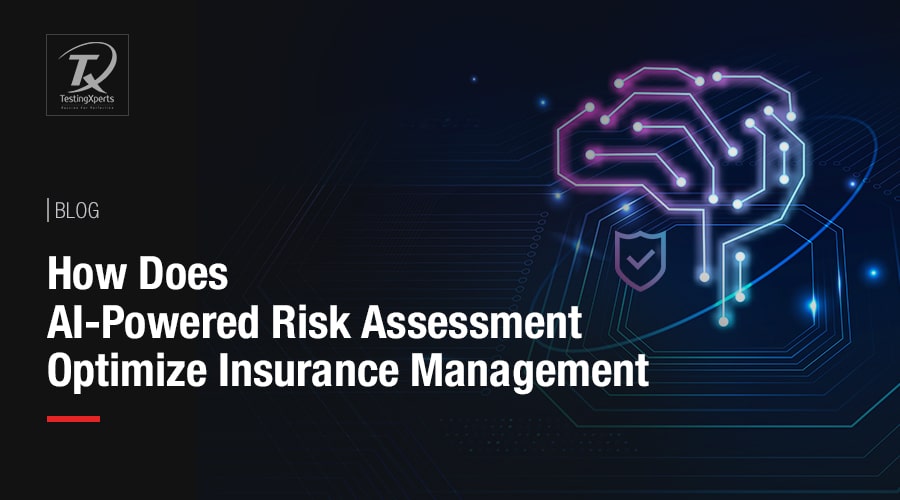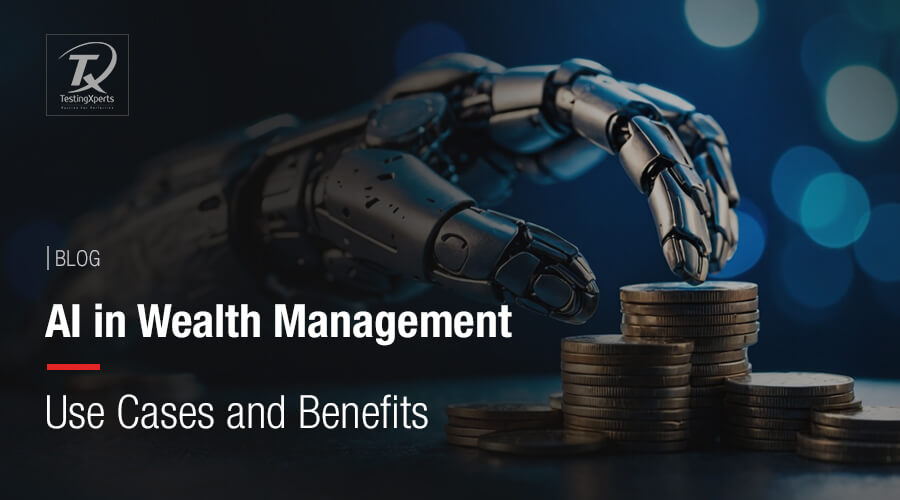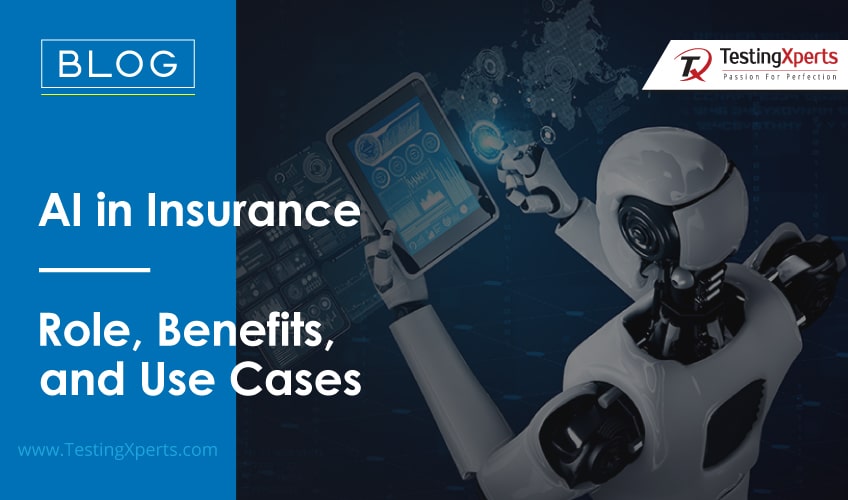
- AI-powered Risk Assessment
- Business Benefits of AI-enabled Risk Assessment
- Impact of AI Technologies over Risk Assessment
- Things to Consider When Using AI
- Why Partner with Tx?
- Summary
Artificial intelligence (AI) is a powerful technology that has opened doors to new possibilities and innovations for every industry. If we talk about the insurance industry, AI has shown remarkable results in improving the efficiency of risk management, underwriting, and other tasks. According to statistics, the value of AI in the insurance industry will reach $35.77 billion by 2030, growing at a CAGR of 33.06%. AI-powered risk assessment is especially enabling personalized insurance pricing strategies to achieve greater efficiency and accuracy while upscaling customer experience.
AI-powered Risk Assessment

To cut it short, AI is assisting insurers with:
- Better risk assessment, fraud detection, and reduction in human errors
- Quicker claims processing and streamlined customer services
- Smooth underwriting process with lesser manual involvement
Business Benefits of AI-enabled Risk Assessment

- AI customizes interactions based on customer preferences and personal data and personalizes solutions/recommendations. This builds brand loyalty and helps improve CX. It also automates claims analysis and processing, which reduces claims settlement time.
- Leveraging AI, insurers can quickly process large data volumes from multiple sources, such as claims reports, communication, and application forms. They can also make claims decisions in real-time and reduce turnaround time, which is very helpful during disaster recovery situations.
- Automating routine tasks with artificial intelligence enables human agents to focus on high-value and complex activities, such as CRM and strategic planning. This helps improve resource allocation and productivity.
- AI models can create accurate risk profiles by analyzing broader data from sources like telematics, social media, etc. ML algorithms can identify patterns and predict outcomes, improving the accuracy of risk assessments and ensuring fair premium pricing.
Impact of AI Technologies over Risk Assessment

Machine Learning (ML)
ML algorithms analyze and comprehend historical datasets to identify potential risk factors. The data could include past claims, credit scores, driving records, accident records, and policyholder demographics. ML models learn from historical data to predict the likelihood of future claims. Unlike traditional methods, ML models consider various variables to provide a comprehensive risk assessment. Also, insurers can adjust premiums in real-time by taking new data inputs. They can categorize their customers according to risk profiles and offer a tailored approach regarding service, products, and pricing.
Natural Language Processing (NLP)
Insurers can automatically extract data from large data volumes (structured and unstructured), such as accident reports, claim forms, and medical records. This improves processing time and reduces dependency on manual data entry. NLP enables insurers to measure customer sentiment by analyzing reviews, SM posts, and interactions. This becomes useful when measuring risk levels and customer satisfaction. Using NLP, insurers can detect inconsistencies in the claims and identify potential frauds. It can analyze patterns in the language used to find the likelihood of fraud.
Computer Vision
Insurers can analyze images and videos of damaged vehicles, property, etc., using computer vision technology to get accurate and consistent evaluation results. This also speeds up the claim’s authentication and processing.
Things to Consider When Using AI

What to do?
- Leverage Predictive Analytics for Risk Profiling: AI models can analyze historical data to predict potential risks accurately. Leveraging ML to identify key patterns and trends would enable more accurate underwriting decisions.
- Ensure Compliance with Regulatory Standards: Insurers should ensure compliance with industry regulations such as GDPR, HIPAA, and other data protection laws. Transparent AI usage is essential for gaining customer trust and avoiding legal penalties.
- Implement Explainable AI (XAI): Leverage AI models that provide clear insights into decision-making. Explainability enhances accountability and builds confidence in automated assessments.
- Continuously Monitor AI Models: AI models require regular monitoring to prevent any biased or inaccurate predictions. Regular audits and performance evaluations help maintain fairness and reliability in risk assessment.
- Enhance Fraud Detection with AI: Leverage AI-powered anomaly detection to identify fraudulent claims and minimize financial losses. Advanced algorithms can detect unusual behaviour patterns in real-time.
What to Avoid?
- Solely Relying on AI Without Human Oversight: AI should augment, not replace, human expertise. Complex cases require human judgment to ensure fairness and accuracy.
- Ignore Bias in AI Models: Biased training data can lead to discriminatory risk assessments. Regularly test and refine AI models to eliminate bias and promote equitable outcomes.
- Overlook Data Security Measures: Sensitive customer data must be protected with robust encryption and access controls. Any lapse in data security can lead to breaches and reputational damage.
- Use One-Size-Fits-All AI Solutions: Every insurance segment has unique risk factors. Customizing AI models to specific business needs ensures better decision-making and customer satisfaction.
- Neglect Customer Communication: Policyholders should understand how AI impacts their insurance experience. Clear communication about AI-driven decisions enables transparency and trust.
Why Partner with Tx?
- Next-gen technologies like AI, ML, and RPA to drive intelligence and cost efficiency in areas like risk assessment, claim processing, and finance.
- Enabling underwriters to make quick decisions using advanced data analytics.
- Leveraging historical data for ML algorithms to redefine risk assessments while reducing operational costs.
- Rich pool of experts having E2E functional knowledge of the AI and insurance business processes.
- In-house AI-powered accelerators like Tx-SmarTest, Tx-Automate, and Tx-HyperAutomate to improve risk management strategies.
Summary
AI-powered risk assessment is changing how the insurance industry approaches underwriting, fraud detection, and decision-making. It automates claims processing, enhances risk profiling, and ensures accurate premium pricing. However, insurers must ensure compliance, monitor AI models for bias, and maintain data security. Tx leverages AI-driven solutions to optimize risk assessment, enhance underwriting, and streamline claims processing. With in-house accelerators and industry expertise, Tx delivers scalable solutions that drive accuracy, compliance, and seamless customer experience. To know how Tx can help, contact our AI experts now.
Discover more
Get in Touch
Stay Updated
Subscribe for more info




